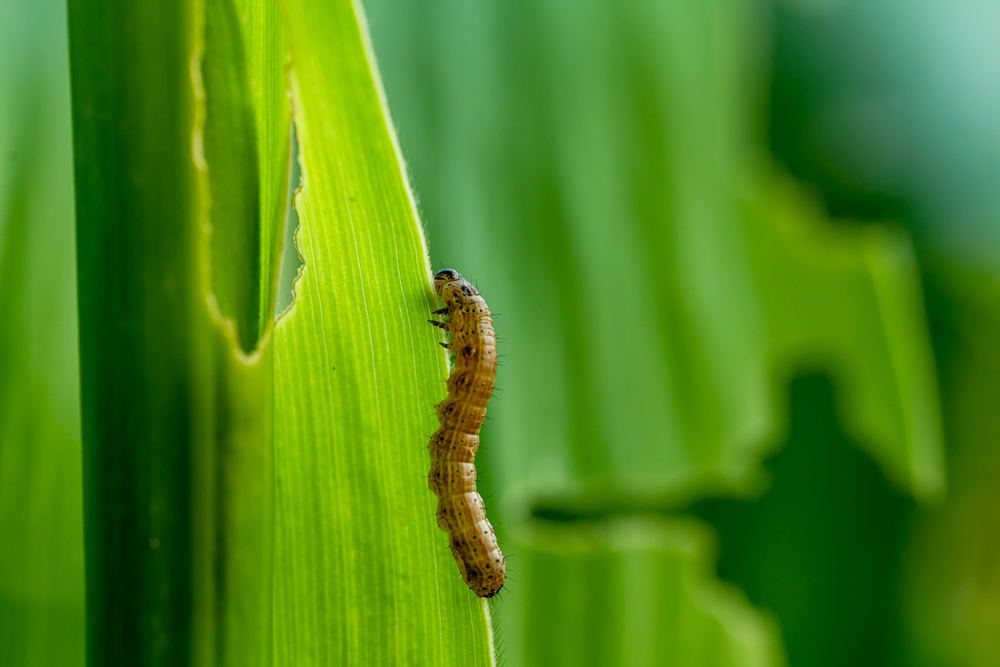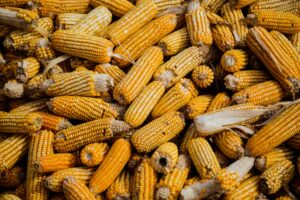While genetically modified manipulation has been around for hundreds of years, it was not until the early 90s that it was used commercially (A.S.Bawa & K.R Anilakumar, 2012). Genetic engineering (GE), also known as genetic modification/manipulation (GM), is a process of modifying and altering the DNA of an organism to obtain desirable characteristics (World Health Organisation, 2014). Recently, GM has become a controversial debate. People are starting to raise their concerns as more genetically modified organisms (GMOs) are going into the consumer market.
Malnutrition

One in nine people in the world today are malnourished with 45% of deaths in children under 5 being due to poor nutrition (UN, 2019). GM crops possessing genes from different species could solve issues such as food shortage and malnutrition. In many developing countries, common deficiencies are caused by iodine and zinc intake (GRHB, 2019) with more than 250 million people affected by vitamin A deficiency (VAD)(WHO, 2019). VAD affects the eye, vision health and cell growth (Jillian. K, 2018).
To tackle this problem, scientists have created Golden Rice which contains provitamin A, unlike traditional rice. According to Golden Rice Humanitarian Board (2019), Golden Rice combats VAD by synthesising beta-carotene with additional two genes which consist of a plant phytoene synthase and a bacterial phytoene desaturase which allows the beta-carotene to accumulate in the grain. The rice contains high levels of vitamin A to meet the dietary requirement. Farmers play a role in planting these seeds to lower VAD while bringing them revenue which benefits the country’s economy as well. The golden rice will allow kids to have a longer lifespan and with a lower death rate and malnutrition, it allows countries to continue developing as they do not need to focus their resources on healthcare.
Health
GMOs have been one of the main areas of biomedical research since the 1980s and have paved the way to produce safer and cheaper vaccines to cure diseases. Scientists were able to produce complex pharmaceuticals from the GMOs to battle diabetes. One in nine Singaporeans aged 18 to 69 years old that were affected by diabetes has increased by 3.1 % from 2004 to 2010 (MOH, 2010). Type 1 diabetes is a result of the body’s failure to produce insulin while type 2 diabetes is the body’s resistance to insulin (WHO, 2019).

Insulin is proof that GMOs were successful in the medical sector and are currently used clinically worldwide. Insulin is a hormone produced by the pancreas that regulates blood sugar levels (William. C, 2018). Scientists created insulin from recombinant DNA. According to the U.S National Library of Medicine, scientists inserted the human insulin gene into the plasmid of a bacteria. This recombinant bacterium is left to ferment to produce insulin similar to how yeast is used to produce beers. Due to the use of very few ingredients and the bacteria’s rapid reproduction, insulin can be produced at lower costs and in higher quantities meaning that more lives can be saved and improved. With the success of insulin, GMOs have proved itself that it can and will continue to cure more diseases.
Less Reliance on Pesticides
Genetic modification gives scientists the freedom to engineer and changes the genetics of crops and plants to obtain desirable characteristics. Pest causes major disruption to the food supply. According to researchers, pre and post-harvest pests destroy 30-40% of the global agricultural production (Encyclopedia of Applied Plant Sciences, 2017). The losses are magnified in less developed countries as farmers are not able to afford pesticides.

Millions of dollars were invested to get rid of pests. At one point in time, pesticides were the solution. However, chemicals in pesticides resulted in environmental pollution (Swapan Kumar Ghosh, 2021). Soils become less conducive for plants to grow. Farmers that are able to afford pesticides are also exposed to dangerous chemicals that can be found in them. As the years pass, the effects of exposure to pesticides can be seen in the deteriorating health of the farmers.
Over the years, scientists were able to genetically engineer resistance to major pests. Farmers were able to grow their crops without heavy reliance on pesticides while at the same time increasing yields. The lower reliance on pesticides also removed the harmful effects of pesticides on consumers as well as farmers. It reduces environmental pollution and food production cost while increasing food availability
Greater & Faster Yields
According to scientific reports by researchers in Pisa, Italy, it was found that genetically engineered corn has a significantly higher yield than non-genetically modified varieties. As mentioned previously, scientists are able to obtain desirable crop characteristics through genetic manipulation.

Major factors that affect crop yields are environmental conditions and pests. Through GM, scientists are able to reduce the impact of these factors. Resistance to pests has also resulted in more crop yield as fewer crops are destroyed pre and post-harvest. Scientists could engineer crops that require less water, in undesirable climates such as cold or hot and dry climates. Though climate change has affected the climate of certain countries, GM foods are still able to grow. It ensures agricultural production continues despite the time of the year and season.
Another way is to modify the crop such that each GM crop produces more yield than its non-GM counterpart. Corteva Agriscience, a chemical and seed company was able to produce GM hybrids that yielded 3% to 5% more grain than control plants. The scientists were able to engineer plants that have bigger leaves which resulted in an 8 to 9% increase in converting sunlight into sugars.
Conclusion
Genetic modification allows scientists the freedom to remove undesirable DNA and add desirable DNA. Effectively, scientists are able to create the perfect crop or the perfect gene. However, there are still many unanswered questions. Is it all safe and sound? Is it ethical?
References
Andrew Malone (2008, November 3). The GM genocide: Thousands of Indian Farmers are Committing Suicide after using Genetically Modified Crops. The Daily Mail. Retrieved from https://www.dailymail.co.uk/news/article-1082559/The-GM-genocide-Thousands-Indian-farmers-committing-suicide-using-genetically-modified-crops.html
A.S Bawa, K.R Anilakumar (2013). Genetically modified foods: safety, risks and public concerns-a review. Retrieved from https://www.ncbi.nlm.nih.gov/pmc/articles/PMC3791249/
European Union Judgement of the Court (Fourth Chamber), Case C-552/07 (2009). Retrieved from http://curia.europa.eu/juris/document/document.jsf;jsessionid=9ea7d2dc30dbc3b29977a1134bcfb724c51ba52915a8.e34KaxiLc3qMb40Rch0SaxuMaNb0?text=&docid=72933&pageIndex=0&doclang=en&mode=lst&dir=&occ=first&part=1&cid=929369
Food and Agriculture Organization of United Nations (2001). GMOs and the Environment. Retrieved from http://www.fao.org/3/x9602e/x9602e07.htm#TopOfPage
Genetic Modification Advisory Committee (2013). The Singapore Biosafety Guidelines For Research On Genetically Modified Organisms (GMOs) Retrieved from https://www.gmac.sg/pdf/Research/Singapore%20Biosafety%20Guidelines%20for%20GMO%20Research_Jan%202013.pdf
Genetic Modification Advisory Committee (1999). Committee Set Up To Establish Biosafety Guidelines In Singapore For Genetically Modified Organisms. Retrieved from https://www.gmac.sg/News/1999/1999_05_11.html
Golden Rice Humanitarian Board (n.d). Vitamin A Deficiency-Related Disorders (VADD). Retrieved from http://www.goldenrice.org/Content3-Why/why1_vad.php
Goldern Rice Project (n.d). The Science Behind Golden Rice. Retrieved from http://www.goldenrice.org/Content2-How/how1_sci.php
HealthHub (n.d). Diabetes in Singapore. Retrieved from https://www.healthhub.sg/a-z/diseases-and-conditions/626/diabetes
Jane E. Brody (2018, April 23). Are G.M.O Safe? The New York Times. Retrieved from https://www.nytimes.com/2018/04/23/well/eat/are-gmo-foods-safe.html
Jillian.K (2018). Vitamin A: Benefits, Deficiency, Toxicity and More. Retrieved from https://www.healthline.com/nutrition/vitamin-a
Hossein.A, Hossein.M, Atry.S, Zeynab.J, Parisa.R, Philippe.D.M, Frank.W (2015). Genetically modified crops and small-scale farmers: Main opportunities and challenges [PDF File]. Retrieved from https://www.researchgate.net/publication/270580127_Genetically_modified_crops_and_small-scale_farmers_Main_opportunities_and_challenges
Library of Congress (2015). Restrictions on Genetically Modified Organisms: United States. Retrieved from https://www.loc.gov/law/help/restrictions-on-gmos/usa.php
Library of Congress (2015). Restrictions on Genetically Modified Organisms: European Union. Retrieved from https://www.loc.gov/law/help/restrictions-on-gmos/eu.php#Release
Lisa W. Foderaro (2019). Climate Change has Contributed to Droughts Since 1900-and may get worse. Retrieved from https://www.nationalgeographic.com/environment/2019/05/climate-change-linked-drought-past-century-via-tree-rings/
Mark K. Sears, Richard L. Hellmich, Diane E. Stanley-Horn, Karen S. Oberhauser, John M. Pleasants, Heather R. Mattila, Blair D. Siegfriedi & Galen P. Dively (2001). Impact of Bt pollen on Monarch Butterfly Populations: A Risk Assessment [PDF File]. Retrieved from https://www.researchgate.net/publication/11787810_Impact_of_Bt_corn_pollen_on_monarch_butterfly_populations_A_risk_assessment
Pellegrino, E., Bedini, S., Nuti, M., & Ercoli, L. (2018). Impact of genetically engineered maize on agronomic, environmental and toxicological traits: a meta-analysis of 21 years of field data. Retrieved from https://doi.org/10.1038/s41598-018-21284-2
United Nations (2015). UN projects world population to reach 8.5 billion by 2030, driven by growth in developing countries. Retrieved from https://www.un.org/sustainabledevelopment/blog/2015/07/un-projects-world-population-to-reach-8-5-billion-by-2030-driven-by-growth-in-developing-countries/
United Nations (n.d). Goal 2: Zero Hunger – United Nations Sustainable Development. Retrieved from https://www.un.org/sustainabledevelopment/hunger/
World Health Organization (n.d). Genes and Human Diseases. Retrieved from https://www.who.int/genomics/public/geneticdiseases/en/index3.html
World Health Organisation (2014). Frequently asked questions on genetically modified foods. Retrieved from https://www.who.int/foodsafety/areas_work/food-technology/faq-genetically-modified-food/en/
World Health Organization, United Nations Childrens Fund (2014). Global Prevalence of Vitamin A Deficiency [PDF File]. Retrieved from https://www.who.int/nutrition/publications/micronutrients/vitamin_a_deficiency/WHO_NUT_95.3/en/ (Original work published 1995)
Richard L. Hellmich & Kristina Allyse Hellmich (2012). Use and Impact of Bt Maize. Retrieved from https://www.nature.com/scitable/knowledge/library/use-and-impact-of-bt-maize-46975413
Singapore Ministry of Health (2010). National Health Survery 2010 [PDF File]. Retrieved from https://www.moh.gov.sg/docs/librariesprovider5/resources-statistics/reports/nhs2010—low-res.pdf
U.S National Library of Medicine (n.d). How did they make Insulin from Recombinant DNA. Retrieved from https://www.nlm.nih.gov/exhibition/fromdnatobeer/exhibition-interactive/recombinant-DNA/recombinant-dna-technology-alternative.html
Stokstad, E. (2019, November 4). New genetically modified corn produces up to 10% more than similar types. Retrieved July 16, 2022, from Science.org website: https://www.science.org/content/article/new-genetically-modified-corn-produces-10-more-similar-types#:~:text=In%20field%20tests%20across%20corn,the%20National%20Academy%20of%20Sciences%20.
Pellegrino, E., Bedini, S., Nuti, M., & Ercoli, L. (2018). Impact of genetically engineered maize on agronomic, environmental and toxicological traits: a meta-analysis of 21 years of field data. Scientific Reports. https://doi.org/10.1038/s41598-018-21284-2
ScienceDirect. (n.d.). Plant Pests. Retrieved on 15 July 2022 from: https://www.sciencedirect.com/topics/agricultural-and-biological-sciences/plant-pests






